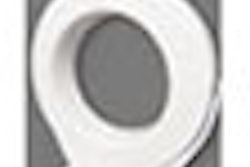The results of a new cost-effectiveness analysis suggest that using CT angiography (CTA) to confirm suspected carotid occlusion is more cost-effective than catheter angiography (CA).
The study represents a rare look at the cost-effectiveness of the use of CTA for carotid disease. Catheter angiography is the standard reference exam for differentiating between complete occlusion and severe stenosis, but it is a costly alternative that includes a small risk of stroke to the patient.
"Despite the superior sensitivity and specificity of CA in the model compared with CTA, the greater cost of CA along with its higher rates of complications shifts the advantage to CTA," wrote study authors Dr. Devin Brown, Dr. Teresa Jacobs, and colleagues from the University of Michigan in Ann Arbor; Dr. Stuart Hoffman from the Geisinger Medical Center in Danville, PA; and Michael Chernew, Ph.D., from Harvard Medical School in Boston (Journal of Neuroimaging, October 2008, Vol. 18:4, pp. 355-359).
While carotid ultrasound has high sensitivity for internal carotid artery (ICA) occlusions, it produces false-positive results in as many as 15% of cases, necessitating the addition of a confirmatory test -- usually intra-arterial conventional angiography or CT angiography.
"CA is considered the reference standard for assessing the degree of ICA stenosis," Brown and colleagues wrote. "CA carries with it a risk of stroke and is expensive, while CTA is safer and less costly than CA, but is less accurate. We therefore performed a cost-utility analysis to determine the cost-effectiveness of using CTA compared with CA to confirm a suspected ICA occlusion."
The researchers developed a Markov decision-analytic model to estimate the cost-effectiveness of CTA compared with catheter angiography in a hypothetical cohort of symptomatic patients whose screening results with either ultrasound or MR angiography (MRA) suggested an ICA occlusion.
"Four possible outcomes were considered: death from the diagnostic test, stroke from the diagnostic test, stroke by two years, and death by two years," the authors said of their model. "Two years was selected for the time-horizon as the risk of stroke for those with a severe stenosis who undergo CEA approximates those treated medically after two to three years."
Long-term outcomes were approximated using Markov models, which use simulation techniques to evaluate the prognoses of a hypothetical cohort of patients given repeated exposure to a particular health risk.
Costs were estimated in 2004 dollars from Medicare reimbursement records. Effectiveness of the tests was measured in quality-adjusted life years (QALYs).
The average patient undergoing CTA experienced 1.83 QALYs at a cost of $9,178. Patients undergoing catheter angiography had 1.82 QALYs at a cost of $11,531, delivering an incremental cost-savings of $2,353 for CTA.
Changing the modality used for initial screening did not change the results. Repeating the analysis assuming that contrast-enhanced MRA rather than ultrasound was used for screening yielded similar results, and CTA remained dominant over CA.
The cost-effectiveness was $5,012 for CTA and $6,322 for CA, and CTA remained more cost-effective even when the lowest in its range of sensitivities was compared to CA's highest sensitivity, the group wrote.
"Two-way sensitivity analyses performed with CTA sensitivity and specificity and the key variables (probability of ICA occlusion at the time of the test, probability of stroke from CA, and the utility of stroke) also supported CTA as the preferred strategy throughout the ranges tested," Brown and colleagues wrote.
Even so, "in the 'worst case' scenario model, where the costs, sensitivities, specificities, and complications were all biased against CTA and in favor of CA, the incremental cost-effectiveness of CTA was $690,225, suggesting that CTA was no longer cost-effective compared with CA. CTA remained dominant over CA in the two partially biased models," the group reported.
The analysis suggests that CTA is more cost-effective than catheter angiography for the confirmation of a symptomatic carotid artery occlusion detected either at ultrasound or at MRA, according to the authors.
"The decision to pursue further diagnostic testing in a patient who is suspected of having an ICA occlusion is a trade-off between potential complications of the confirmatory test and the need to identify an operable ICA stenosis," they wrote. "Despite CTA's inferior accuracy, its lower complication rate and lower cost compared with CA resulted in a favorable cost-effectiveness ratio in almost all scenarios tested."
The cost difference, amounting to $2,353 per patient in favor of CTA, is far larger than the difference in clinical outcomes for patients undergoing the two procedures, "suggesting that the model results are largely being driven by the relative costs rather than the relative effectiveness," they wrote.
The true accuracy of CTA is unknown and may be reduced in centers with less experience, the study cautioned. Even so, the results appear to be robust. Biasing the results in favor of CA within plausible limits did not render CA more cost-effective in either one- or two-way sensitivity analyses.
The analysis suggests that CTA provides a less costly alternative to catheter angiography for the confirmation of suspected ICA occlusions, the group concluded.
By Eric Barnes
AuntMinnie.com staff writer
October 22, 2008
Related Reading
Revascularization seldom of benefit for asymptomatic carotid stenosis, September 25, 2008
B-mode US shines in measuring carotid atherosclerosis, September 19, 2008
MR angiography spots major carotid artery stenoses, August 25, 2008
Vascular ultrasound QA requires consistency, validation, August 4, 2008
Copyright © 2008 AuntMinnie.com



















